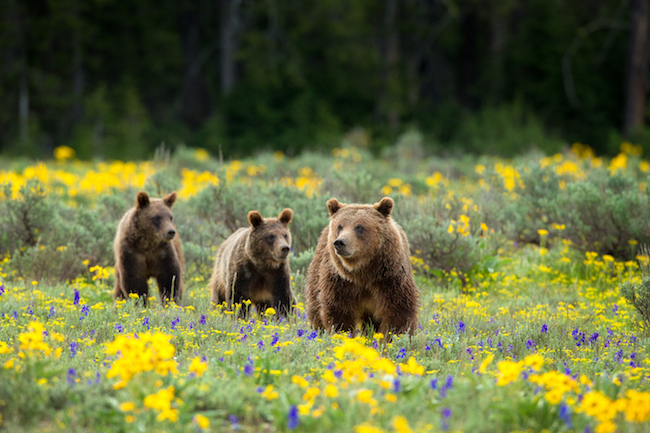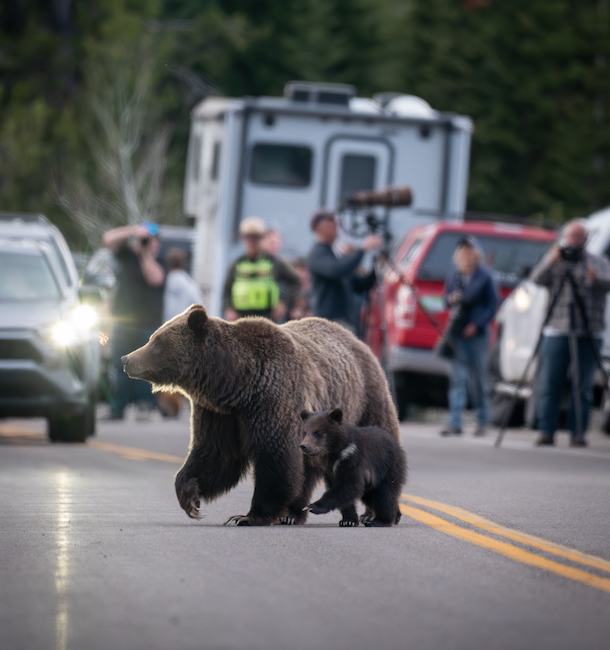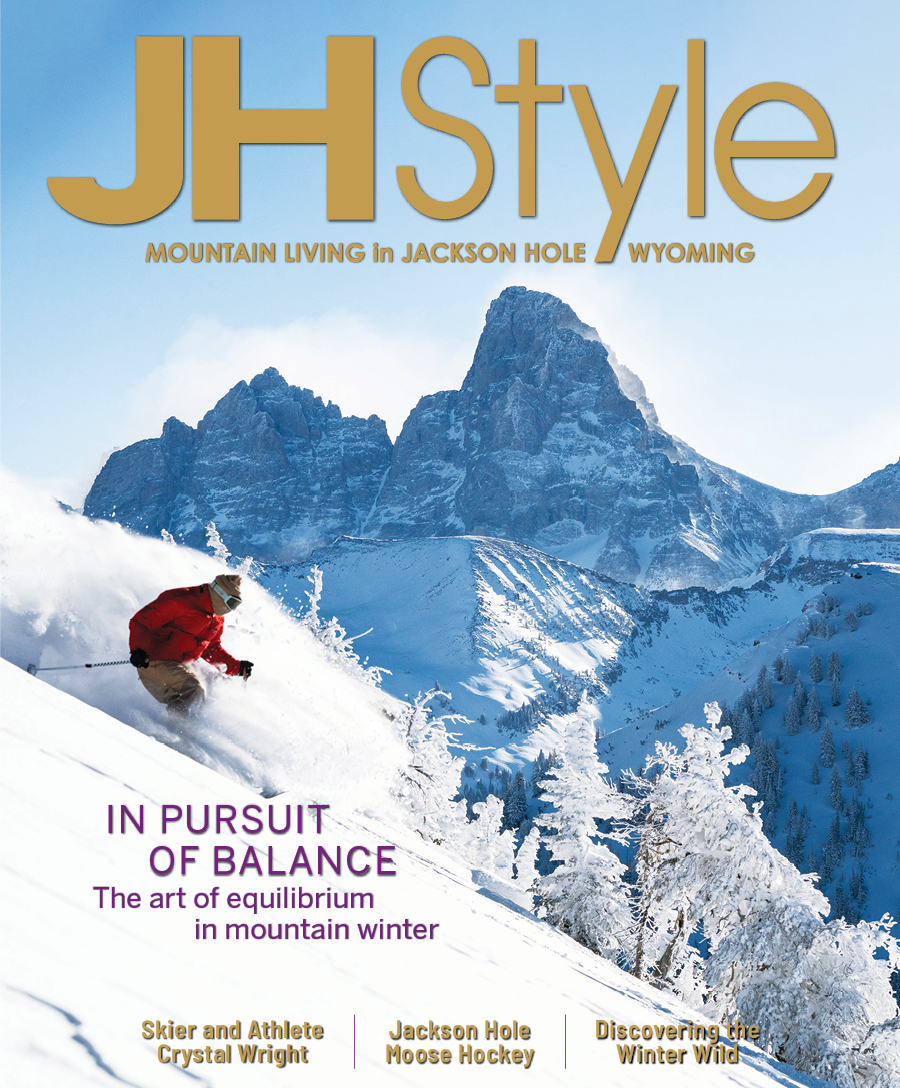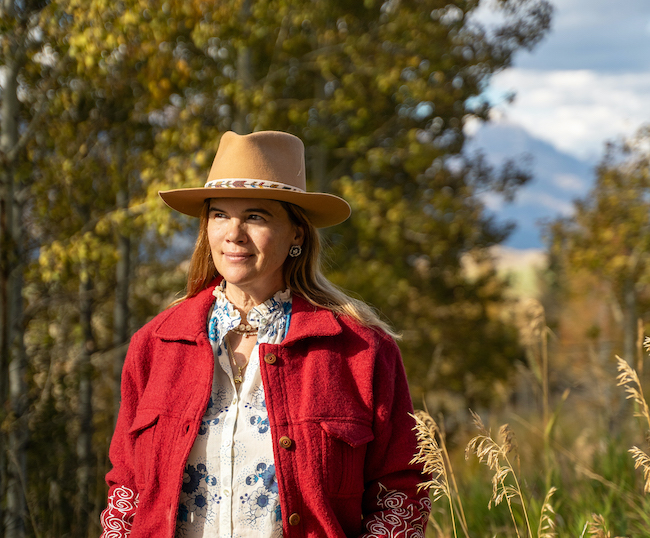From Celebrity to Conservation Icon
04 Jun 2025
How Grizzly 399's legacy shapes the future of the Tetons
Summer/Fall 2025
Written By: Caleigh Smith | Images: Visit Jackson Hole/National Park Service
With the grandeur of the Tetons as her daily backdrop, Grizzly 399 emerged from her wintery hibernation year after year, often with cubs in tow, to tackle yet another season in the Greater Yellowstone Ecosystem. Over more than 28 years in the area and 18 cubs raised to adulthood, she became a symbol of resilience. Known colloquially as “The Queen of the Tetons” and worldwide as one of the most famous grizzly bears to ever live, she leaves behind a legacy that is woven into the fabric of local culture — through local businesses, photography, books, and tourism.
Her death last year was met with a collective grief, but this celebrity bear will live on through renewed conservation efforts and the thousands of tourists, photographers, and locals who flocked to see her and her cubs annually.

399 was more than a bear; she was an ambassador for the wild, a living symbol of coexistence between humans and the natural world. The Tetons have seen a massive uptick in tourism over the last few decades, much of which has been credited singlehandedly to the grizzly Matriarch and her many broods. The ‘bear jams’ along highways, where tourists parked for a chance to witness her majestic presence, became emblematic of how this one bear could draw attention to the complexities of wildlife conservation in an ever-growing human landscape.
Thomas D. Mangelsen, renowned wildlife photographer, encapsulated 399’s impact: “She became a symbol of hope, resilience, and a much-needed coexistence between humanity and the natural world. For many, she has been our guide, teacher, and inspiration… No wild animal in history has ever been so loved by so many and none has drawn such notoriety, attention, caring, and concern.” It is this notoriety that has sparked renewed conversations about the protection of grizzlies, wildlife corridors, and the future of grizzly populations in the area. Her fame in both life and death brings to the forefront of the collective conscious the issues that these fearsome predators face in light of human expansion.
The Wyoming Game and Fish Department has been involved in the development of wildlife crossings over highways. These crossings are designed to reduce the number of bear-vehicle collisions, ensuring that bears like 399 and her cubs can cross roads safely. The installation of wildlife overpasses, like the one on US Highway 89 near Grand Teton National Park, has been a direct response to concerns raised by the aforementioned ‘bear jams.’

Grand Teton National Park and Yellowstone National Park, among other agencies, have used 399’s story to push for responsible wildlife viewing. The U.S. Fish and Wildlife Service and the Interagency Grizzly Bear Study Team (IGBST) have been working together on grizzly bear population monitoring, improving bear management techniques, and enhancing recovery efforts for grizzlies in the Yellowstone region. The Greater Yellowstone Coalition and other conservation groups have collaborated with government agencies to monitor bear populations, collect data, and implement strategies for minimizing human-wildlife conflicts. These are just a few examples of efforts inspired by and propelled forward because of 399 and her influence.
As many in the world mourn her passing last year, 399’s legacy endures, continuing to challenge and inspire conservationists, locals, and tourists alike. As the “Queen of the Tetons,” her story is a poignant reminder of the challenges ahead in balancing human development with wildlife preservation, ensuring that creatures like 399 and her many offspring can continue to roam, unencumbered and protected, in the natural landscapes that we all call home.











